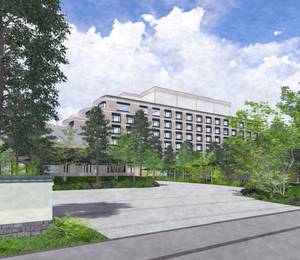Melbourne, Australia – To support asset owners improve the performance of existing buildings and in stepping up to the net zero challenge, multi-disciplinary engineering consultancy, Cundall, has promoted Mathuran Marianayagam as the Australian National Lead for Building Performance Services (BPS).
The newly created role signal’s Cundall’s ongoing commitment to decarbonising the built environment, with Mathuran now leading a team that will work collaboratively with the business’s Building Services Engineering, ESG and ESD consultancy, Net Zero Buildings consulting and Independent Commissioning Agent services across Australia and Asia Pacific (APAC).
Commenting on his plans as the National BPS Lead, Mathuran said: “Improving building performance is an area of practice that I am very passionate about. We have billions of square metres of built environment already in existence and a real opportunity to shift the net zero carbon performance of the built environment. Many of those buildings will be in use for decades to come so BPS is crucial to developing a meaningful net zero plan for each and every asset. The launch of BPS as a standalone service will allow Cundall to partner with clients for holistic oversight, advisory and optimisation of the entire building lifecycle from individual asset to portfolio scale.”
Garrit Schot, Managing Director of Cundall Australia, said Mathuran’s appointment reflects the growing interest from clients in relation to asset performance and net zero carbon advisory. “We have been seeing increased interest and appetite from asset owners and asset managers for holistic solutions that add value to their portfolios, improve the experience of those working and living in those buildings, and provide a pathway to net zero carbon. As a principal engineer with extensive credentials and experience in Australia, Middle East, and Southeast Asia, Mathuran is supporting our clients and our staff to develop and deliver effective science-based initiatives that will reduce emissions and take us further toward a net zero built environment.”
Since joining Cundall in 2015, Mathuran has achieved significant results for clients. His work with Vicinity Centres and ISPT Super Property led to improvements in their entire retail portfolio energy performance. Mathuran’s key role working with Knight Frank and RF Corval on the Dexus premium office precinct Kings Square, resulted in the first Carbon Neutral Certified commercial office building in Western Australia.
Coinciding with Mathuran’s promotion, Cundall have released a five-step guide to optimal building performance, ‘How to make any building future-fit’. Targeted to portfolio owners, investment managers, campus operators and facility managers, the guide is a practical roadmap to helping buildings benefit from the equivalent of a fitness program to achieve optimum performance. From evaluation of current performance and review of existing investment strategies, through to climate resilience, the guide is a practical and elementary first step in achieving building fitness.
Mathuran says the guide also outlines the importance of a considered ESG strategy in achieving optimal fitness. “How buildings perform can be an indicator of what an asset owner stands for, and we see that in benchmarking such as the Global Real Estate Sustainability Benchmarks (GRESB). That same performance is also indicative of the ESG concerns of the tenants, which is why properties with high NABERS ratings attract higher rents and tend to have tenants who remain in place for longer.”
Cundall’s BPS team will consider the entire lifecycle of a building. For new projects, this means engaging at the initial concept stage and then remaining involved through to handover and beyond, providing ongoing performance measurement, verification and optimisation. This extends beyond energy to also address water, waste, Indoor Environmental Quality (IEQ), tenant wellbeing, digital building services and other factors that affect both operational performance and occupant experience.













